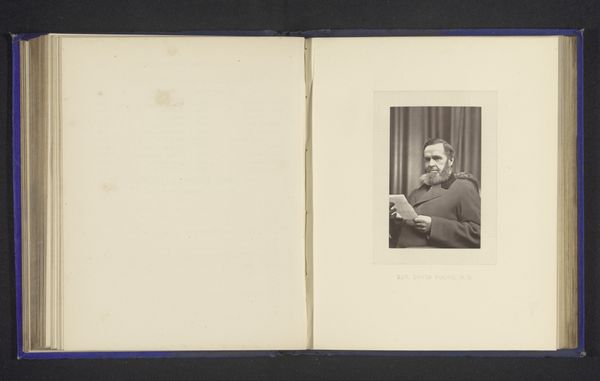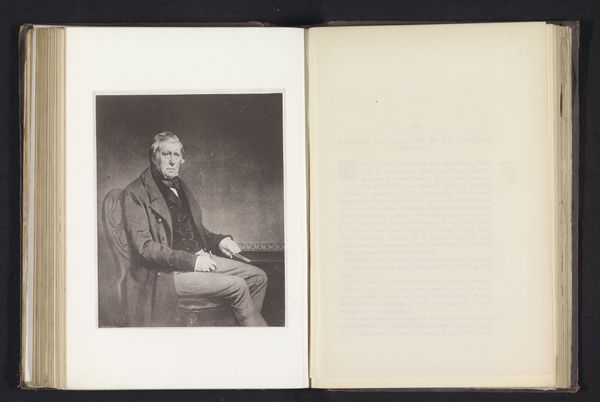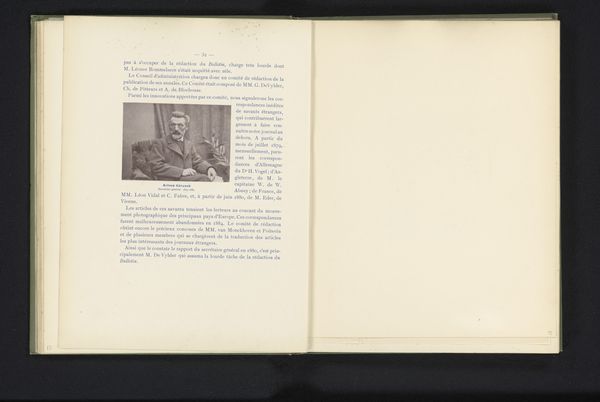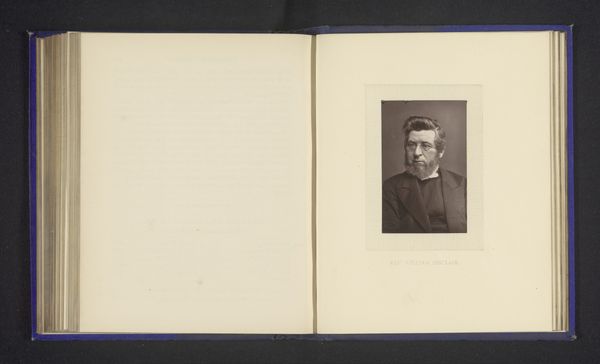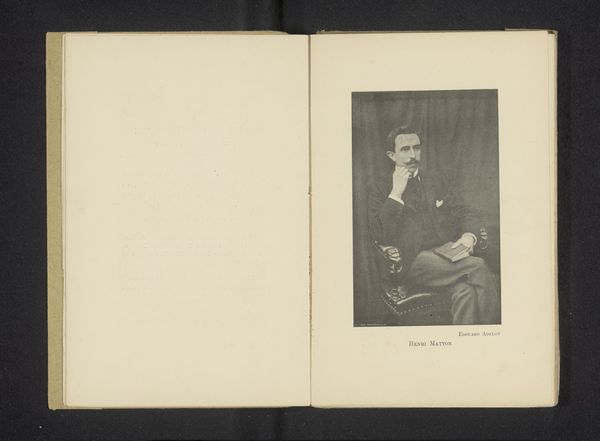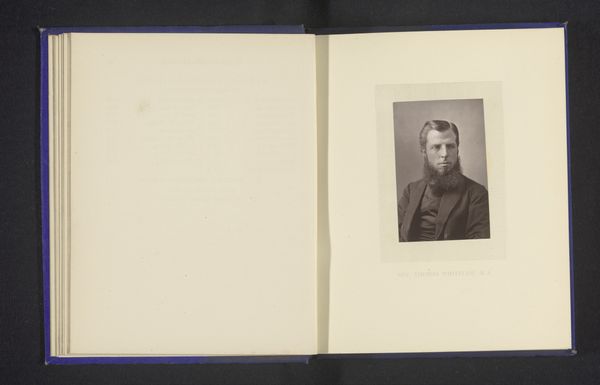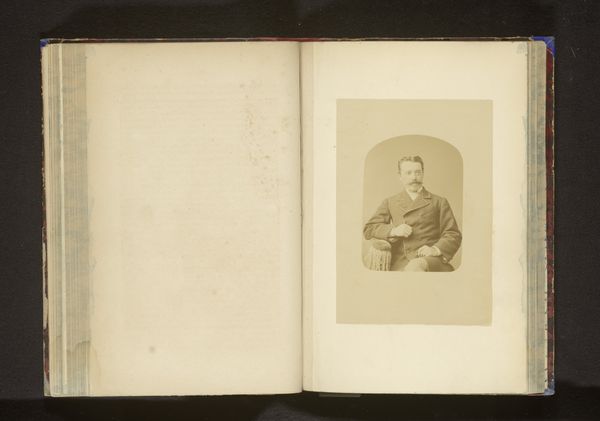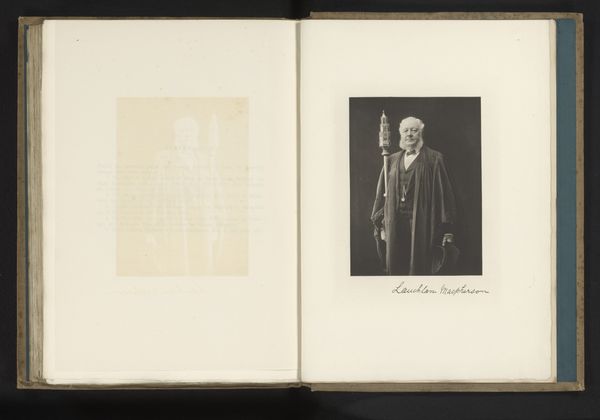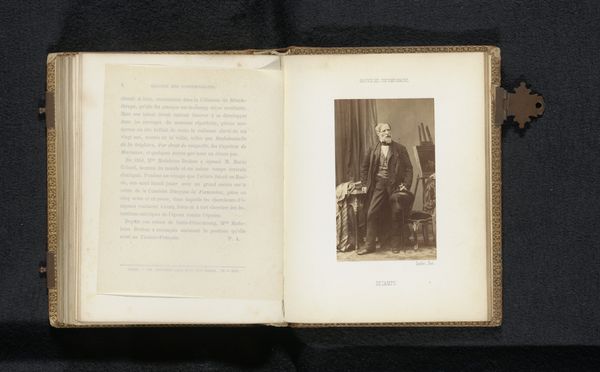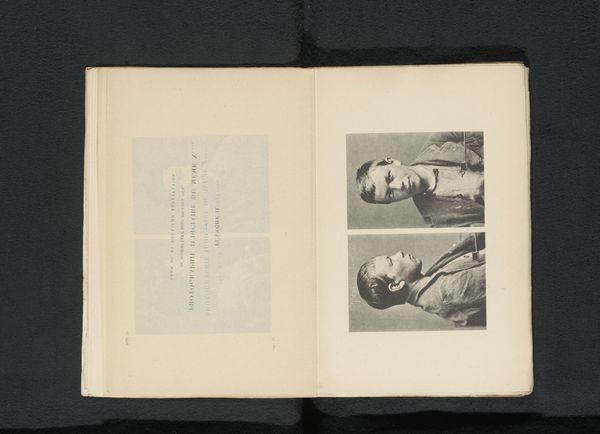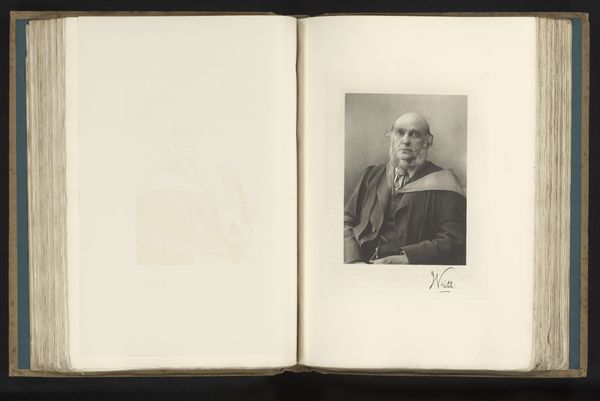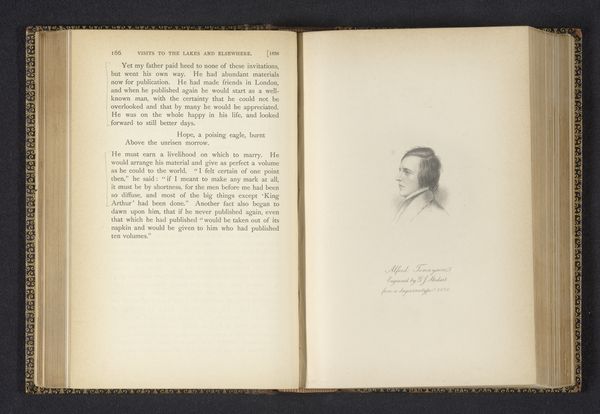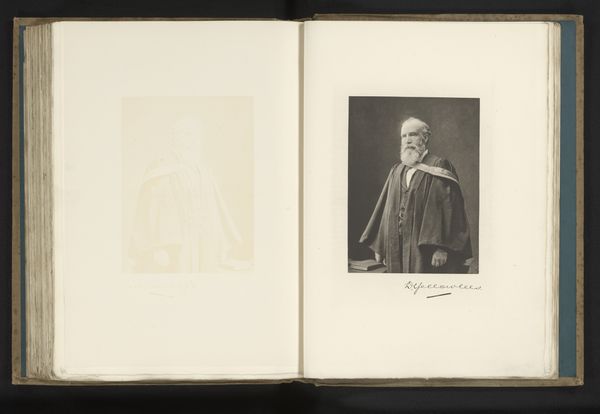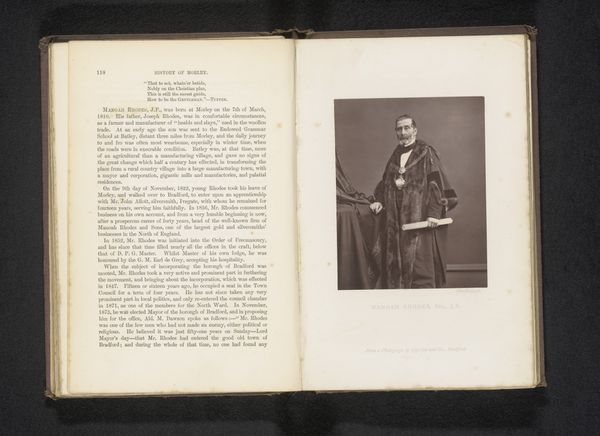
Dimensions: height 194 mm, width 145 mm
Copyright: Rijks Museum: Open Domain
Editor: Here we have a gelatin-silver print simply titled "Portret van Gilbert Murray," created before 1891. It's presented as a plate within a book. There’s a pensive mood; he's caught in a moment of reading, seemingly unaware of the camera. How do you interpret this work? Curator: This portrait invites us to consider the intersections of gender, intellect, and representation in the late 19th century. Murray, presumably a scholar given his engagement with a book, is positioned in a way that reinforces the era's understanding of masculine intellectualism. Consider the sitter's gaze directed downwards. Do you think this compositional choice reinforces the notion of the male gaze as one of authority, looking down upon and studying the world? Editor: That’s a very interesting take, I hadn't considered the power dynamics. I was focused on how introspective he seems. Curator: Exactly. But isn't that introspection, in a man, often interpreted as profound thought, whereas in a woman it might be seen as something else entirely? These societal assumptions are embedded even in portraiture. What do you make of the seemingly romantic aesthetic of the photo in contrast to a possibly more stark social reality? Editor: It is true the soft focus is often associated with romanticism and might not match the actual complexity of social norms from back then... It does prompt thinking beyond face value, considering various intersectional meanings. Curator: Precisely. By analyzing these visual cues within their historical context, we can unpack the subtle yet powerful ways in which art reinforces – or challenges – social constructs and power structures. Editor: Thanks, I'll be looking at portraiture much differently now.
Comments
No comments
Be the first to comment and join the conversation on the ultimate creative platform.
